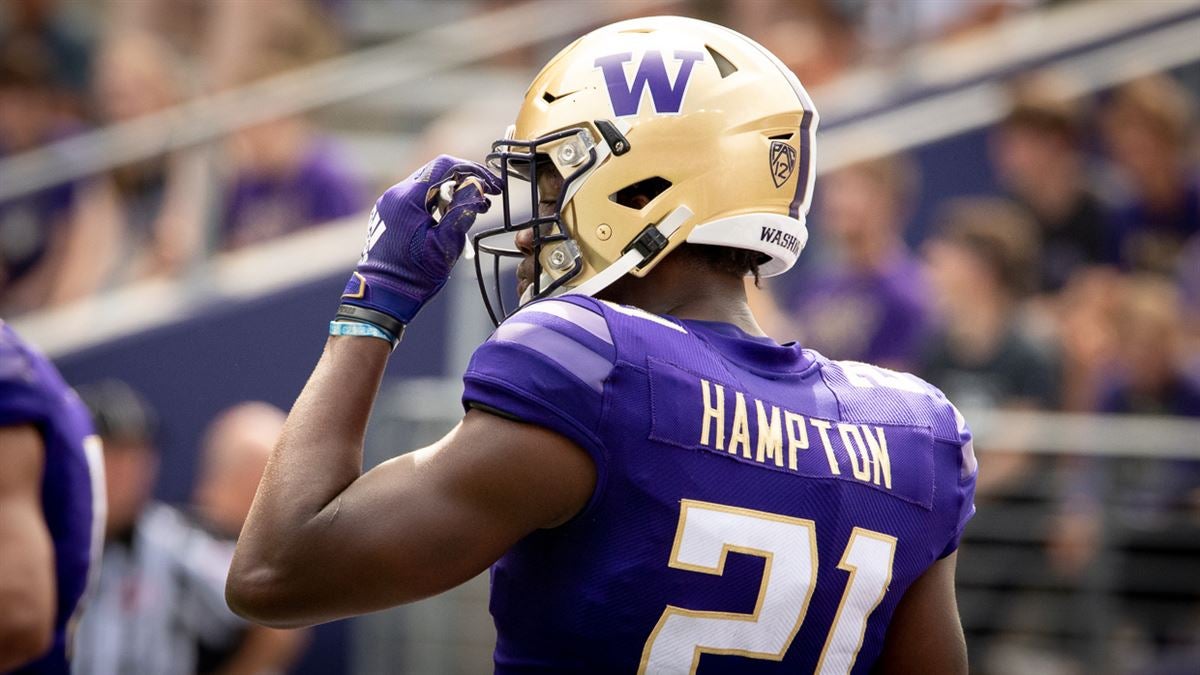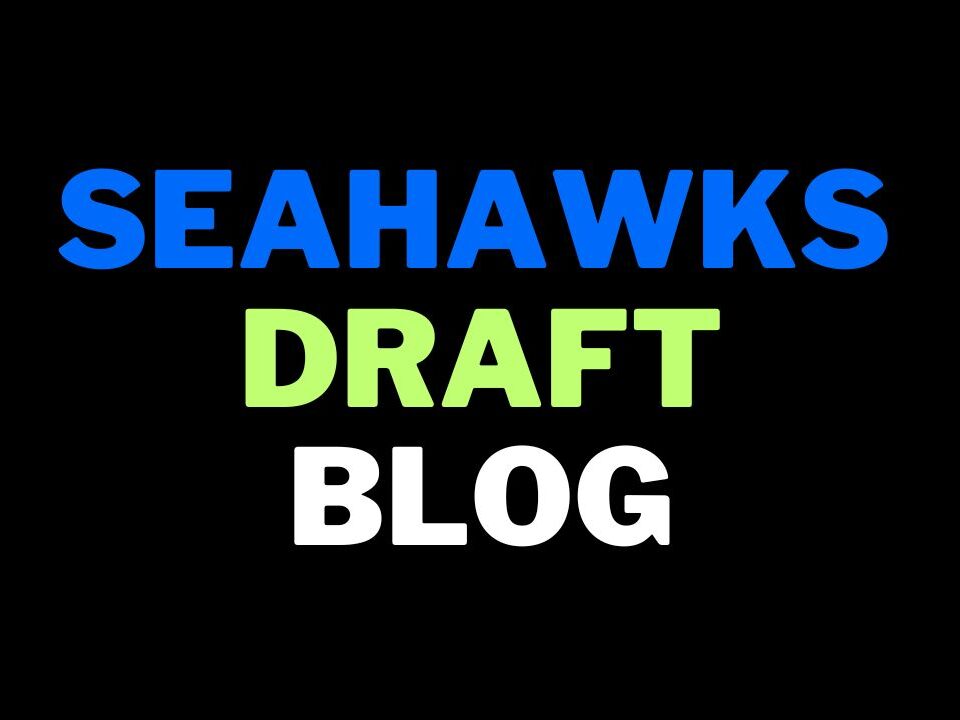
Players who will go earlier than people think
Every year there are players who are underrated in the media. Here are five players who will go earlier than projections are suggesting…
Dominique Hampton (S, Washington)
There’s a chance he’ll go as early as the third round and at worst the early fourth. Hampton has excellent size and length (6-2, 215lbs, +33 inch arms) and at the combine he ran a 4.14 short shuttle and jumped a 39 inch vertical. This is elite-level athleticism for his position. My source at UW had this to say about him:
“Freak of nature, smart, consistent and he’s a great dude. Quiet killer. Our defensive scheme funnelled the vast majority of plays to the strong safety by design and he was good enough in that key position for us to go to a Championship”
On most simulators I see him regularly available in the later rounds. That won’t happen. He’s going to go a lot earlier than people think and it won’t be a surprise if a team like the Seahawks keep a keen eye on him.
Ben Sinnott (TE, Kansas State)
I notice that he’s often available in round three on most simulators and in one of his recent draft previews, Brock Huard said Sinnott was a fourth round pick. I don’t think there’s much chance he gets out of the top-50 and he could go in the top-40. At 250lbs he ran an elite 1.59 10-yard split and a 4.23 short shuttle. These are the two key metrics at tight end. On top of this, he jumped a 40 inch vertical.
Sinnott has A+ character and will be a versatile chess piece capable of lining up in a variety of different roles from in-line tight end to H-back and full back. He finishes every play, can make the spectacular happen and he’s very reliable.
The thing that makes him stand out, though, is the fact he basically led Kansas State’s offense last season. Jim Nagy made this point when I interviewed him last week — the Wildcats didn’t have a premier receiver to draw coverage. They had to go through Sinnott — and he delivered, producing 676 yards and six touchdowns. That trailed only Brock Bowers, J’Tavion Sanders and Dallin Holker among tight ends in college football in 2023.
He’s a safe pick with high upside and as teams look for the next player capable of having a Sam LaPorta impact — Sinnott has a chance to be that type of player.
Beaux Limmer (G, Arkansas)
Teams do pay attention to explosive traits in the trenches and Limmer is by far the most explosive offensive lineman to enter the league since 2016. His 3.68 TEF score dwarfs former top testers like Tristan Wirfs (3.47), Peter Skoronski (3.37) and Bernhard Raimann (3.37).
His best position is guard and although he shifted to center to help out Arkansas, he’ll be at home moving back to his preferred role while retaining some positional flexibility.
Limmer’s short arms (32 inches) aren’t helpful but his hand placement is good, he gets his angles right and when he doesn’t have to focus on snapping and then getting into position, he’ll have every chance to be an attack-minded aggressor.
Typically you see him projected in the later rounds but it’ll be a surprise if he doesn’t go in the third with his major physical upside.
Nathaniel Watson (LB, Mississippi State)
I don’t understand why there’s so little buzz around Watson compared to other linebackers in this class. We’re talking about a player who can play inside or outside linebacker in a 3-4 system. He called the plays for Mississippi State’s defense (college football’s version of a green-dot player). He can blitz better than any other player at his position in this class (21 career sacks) and he has an old-school demeanour.
He’s not a physical slouch either. He ran a 1.59 10-yard split which shows he has some burst and acceleration and he plays with length (33 inch arms) and heavy hands (10 inches).
Critically for the Seahawks especially, he’s also a finisher. He had the sixth best missed tackle percentage among college linebackers last season (5.4%) and was only a notch below bigger names Peyton Wilson and Junior Colson (both 4.7%).
Most mocks and simulators have Watson as a late day three pick but I think he’s much more likely to go in the fourth round.
Dadrion Taylor-Demerson (S, Texas Tech)
I like the safety class more than most and believe the likes of Tyler Nubin, Javon Bullard, Malik Mustapha, Jaden Hicks, Cole Bishop, Dominique Hampton and Kitan Oladapo have a great chance to become effective starters in a value range. One name who could rival Nubin and Bullard to be the first off the board (depending on how you want to describe Cooper DeJean’s position in the NFL) is Texas Tech’s Taylor-Demerson.
He was the first safety I watched during the 2023 season and he immediately created an impression. You can see his athleticism on tape and it wasn’t a surprise he ran a 4.41 and jumped a 38 inch vertical at 5-10 and 200lbs.
Aside from the traits, he plays with great instinct. He has a tendency to be at the right place at the right time, enabling him to record 10 interceptions in three seasons. He plays with range and can cover ground to get into the right position quickly. He also has genuine positional flexibility and can line up anywhere on the back-end or in the nickel role to help disguise intentions.
It won’t be a surprise if he sneaks into the back-end of round two.
Other predictions I feel confident about
— Troy Fautanu will not make it to the 16th pick for Seattle because he’s a brilliant tackle and we need to stop all this guard talk just because, in the past, people thought he lacked the size to stick outside. He has 34.5 inch arms. He’s a tackle and a bloody good one. He’s a top athlete, he plays with a level of aggression teams will love and he’s one of the 10 best players in this draft. He’s bigger, longer and more athletic than Alijah Vera-Tucker — and a team traded up to #14 to draft him. I think there’s almost no chance he gets to #16 yet he’s the trendy pick for Seattle. I don’t think people realise how good Fautanu actually is.
— Amarius Mims won’t get out of the top-20. When you have his frame and you look as natural on tape as he does, this isn’t a player who lasts in round one. Sure, the lack of playing time is a thing. Yet it’s not just because of injuries — it’s also because he had to bide his time on a loaded Georgia team. It won’t be a surprise if some teams believe he can be the best tackle from this class with the right coaching and guidance. Pittsburgh at #20 might be his floor — he’s just too big, too comfortable in his movement at his size and he plays too important a position to last deep into round one.
— Olu Fashanu, alternatively, will not go as early as people think. I’ve never quite understood the way he is discussed in the media. He’s always had technical flaws. A year ago, had he declared, teams likely would’ve put it down to inexperience. When those same flaws appeared during the 2023 season, you start to wonder why. On top of this, he literally has the same sized hands as small-handed quarterback Kenny Pickett (8.5 inches). This isn’t a good thing when you need to play with heavy hands. He’s a first round pick — but he’s not a top-10 pick.
Value fourth round picks
I think there’s every chance the Seahawks will trade down from #16 if/when Troy Fautanu and Taliese Fuaga come off the board. However, they might not be able to get the day two picks they probably crave to move down. It’s not a big problem though, because round four is likely to be full of good options.
I’ve already talked about two great prospects (Nathaniel Watson and, if they’re lucky, Dominique Hampton). Here are some more:
Malik Mustapha (S, Wake Forest)
On tape he reminded me of Budda Baker. For some reason his stock has never taken off. He’s an A+ character player, who I interviewed a few weeks ago. He has legit starting potential. Team captain and a vocal leader.
Brennan Jackson (EDGE, Washington State)
He ran a 1.62 10-yard split despite not being 100% healthy, then ran a 4.34 short shuttle at pro-day (the same as Laiatu Latu). He plays ever snap like his life depends on it and he’s a playmaker off the edge. Fantastic communicator who I interviewed recently. Team captain.
McKinley Jackson (DT, Texas A&M)
The heart and soul leader of the Aggies defense, Jackson lacks dynamic physical traits but he’s aggressive, can play the run well and he can provide some pass rush. He’s a player who could really come on at the next level playing with better players. Team captain.
Tip Reiman (TE, Illinois)
His lack of action as a receiver will stymy his stock and he looked a bit awkward at the start of the season running routes — yet he’s a strong blocker with exceptional upside (1.55 10-yard split, 4.26 shuttle). Team captain.
Tanor Bortolini (C, Wisconsin)
High character, major upside player who fits the mould of the dynamic, athletic center many teams look for these days. He ran a 4.94 and a 4.28 shuttle at 303lbs, then jumped a 32.5 inch vertical and a 9-4 broad. His 7.16 three-cone is basically a time you’d expect for a really agile tight end. Technically strong.
Fabien Lovett Sr. (DT, Florida State)
Widely respected as a high-character individual, Lovett Sr. has exceptional length (35.5 inch arms) for his 6-5 and 314lbs frame. He’s a tremendously stout two-gapper who plays with consistently heavy 10.5 inch hands. Gets the job done. Team captain.
Caedan Wallace (T, Penn State)
A really consistent blocker who never seems to get flustered and is just really difficult to beat. He could end up having a far better career than some of the bigger name tackles set to go early. Ideal size (6-5, 314lbs, 34 inch arms, nearly 11 inch hands) and tested well (31 inch vertical, 9-8 broad).
Ray Davis (RB, Kentucky)
Incredible upbringing has created a hardened, determined individual who people gravitate towards. Was visibly leading his group at the combine and was the loudest supporter of teammates at the UK pro-day. Runs through contact but more importantly for the Seahawks, has the hands and route-running discipline to be a great third down back.
Tylan Grable (T, UCF)
A high-upside tackle who could play either side of the line. He’s a former quarterback who is now 6-6, 306lbs and has 33.5 inch arms and 10 1/8 inch hands. He ran a 4.95 forty, a 1.69 10-yard split and jumped a 36.5 inch vertical and a 9-9 broad. In terms of physical upside, he has NFL starter level talent.
Jaylen Harrell (EDGE, Missouri)
He has the talent to be a threat off the edge and his testing numbers (pro-day & combine) suggest he has physical upside too. He’s certainly explosive — with a 37 inch vertical and a 9-10 broad. He made some high-impact plays in critical games for Michigan.
How far the Seahawks might be comfortable trading down
This is a draft with a higher than normal number of ‘first round’ players. If Fautanu and Fuaga are off the board by #16, I think the Seahawks will want to trade down. I don’t think they’ll want to trade too far though, to take themselves out of range for the legit first round players.
I think the sweet-spot for this — considering a couple of players will go earlier than they should do — is likely to be around the 26th pick. If the Seahawks trade down beyond that, it’ll likely be because the offers are too good to turn down and possibly include 2025 stock.
It’s been reported this week that Chop Robinson is having an official-30 visit in Seattle. I keep seeing mocks with him lasting into the 20’s, which is stunning for a player that talented. If that’s the case, and the Seahawks move down into the 20’s, they’re right to do as much work as possible on him. He’d be an absolute steal in that range — just as T.J. Watt was as the 30th pick back in 2017.
If it’s not Robinson, someone like Graham Barton would be a viable alternative. I’m not sure you’d want to go any lower than dealing with Green Bay at #25.
Many are suggesting the Bills as possible trade partners but I don’t see it. Buffalo has a lot of needs, so trading away a bunch of stock to move up to #16 just to get, say, Brian Thomas Jr, doesn’t make any sense in a loaded receiver class. Neither would it really benefit the Seahawks unless it’s an amazing offer, because #28 likely takes you out of range for the first rounders in this draft.
The Bills and Chiefs might have to give up a haul to get to #16. For that reason, Philadelphia (#22) and Green Bay (#25) might be more likely trade partners.
Wherever Seattle picks in round one — I think ‘best player available’ is the likely approach. If Fautanu or Fuaga make it to #16, I think they’ll stick and pick.
Another thing on Chop Robinson…
The Ravens selected Odafe Oweh in the first round three years ago, a year before Mike Macdonald was appointed defensive coordinator in 2022. Oweh ran a reported 1.59 10-yard split at pro-day, along with a 4.20 short shuttle. He also jumped a 39.5 inch vertical. he was 6-5 and 257lbs. Robinson ran a blistering 1.54 10-yard split, a 4.25 short shuttle and jumped a 34.5 inch vertical at 254lbs. There are some similarities here — so this is a ‘fit’ in terms of Baltimore’s approach to building their defense.
Oweh had a 56.8 PFF grade in 2022 when Macdonald returned to the Ravens. In 2023, that grade massively increased to an 80.7. So Macdonald’s had some success developing a player like this in his system. I’d also suggest that Robinson’s pass-rushing tape is far better than Oweh’s was.
Granted, the Seahawks may well feel that Macdonald can do for Darrell Taylor what he did for Oweh. Thus, that would make this pick redundant. I also think you can invest too much in edge rushers if they’re going to struggle to get on the field. With only two of Uchenna Nwosu, Boye Mafe, Derick Hall and potentially Robinson being able to play at the same time, this will be difficult to justify if the end product isn’t an outstanding pass rush.
Even so, Robinson is that good. Given the flexibility they have to get out of Taylor’s contract — I wouldn’t rule out a pick like this first up. Especially if they believe he has game-wrecking potential.
Abe Lucas at guard?
I keep hearing fans and media alike questioning Abe Lucas’ fit at guard. So I’m going to keep chucking this line into my articles…
The Washington Huskies last season had Nate Kalepo at guard. He’s 6-6 and 327lbs and a former High School tackle. Before that, Jaxson Kirkland — who is 6-8 and 321lbs — played guard after shifting inside from tackle. Clearly, Scott Huff is very comfortable using big, tall interior linemen. There’s no reason to think a player like Lucas couldn’t kick inside in this scheme if he’s healthy. And it opens up the possibility of Seattle drafting a tackle in round one.
And a final note…
I asked my source at UW for his prediction on a range for Michael Penix Jr. This was before the Falcons signed Kirk Cousins — but this was his response:
“He won’t get past Atlanta and Minnesota”
So seeing this today isn’t a huge surprise:
The Falcons are sending a sizable group to Seattle to conduct a private workout with Washington QB Michael Penix today, per sources. HC Raheem Morris and GM Terry Fontenot are among those in the traveling party, which left this morning.
Atlanta holds the eighth overall pick.
— Albert Breer (@AlbertBreer) April 5, 2024
The Falcons are tied to Cousins until the end of 2025. That’s it. And Cousins is coming off a serious achilles injury.
It may or may not happen — but planning for the future in Atlanta wouldn’t be the worst idea in the world. Good teams should always be planning for now and the future at QB.
If you missed it yesterday, don’t forget to check out my first appearance on the new Puck Sports show, available wherever you get your podcasts:

